Disclosure: Meeple Mountain received a free copy of this product in exchange for an honest, unbiased review. This review is not intended to be an endorsement.
In The Grand Carnival players are competing to have the best summer carnival. They’ll design their fairgrounds, build attractions, and entice guests to spend their tickets, all with the goal of winning the title of The Grand Carnival.
The Actions
The Grand Carnival is played over seven rounds, and in each round a player will have five turns consisting of one action each. Each turn a player will choose if they want to:
- Place a foundation;
- Build an attraction; or
- Move a guest.
Place a Foundation
For the first few turns, most players will be placing foundations, since without them they can’t build attractions or move guests. Foundations have two types of terrain: construction sites and walkways. Each foundation has four spaces on it with some combination of these two terrains. Where you place each foundation matters because guests can only walk on walkways and attractions can only be built on construction sites.
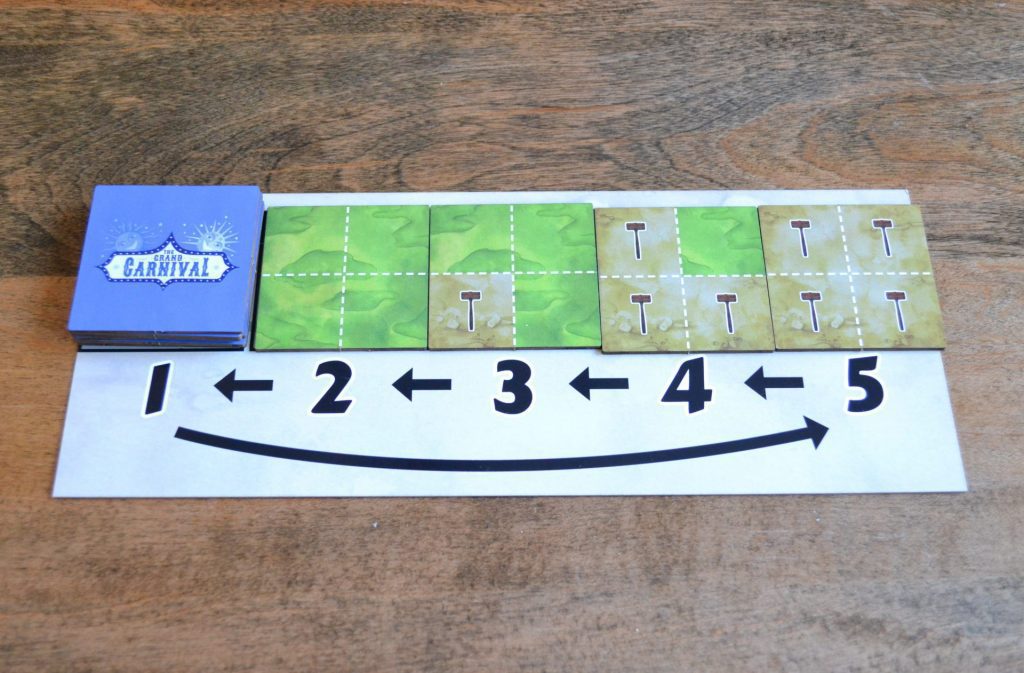
Build an Attraction
In order to have a good carnival, you need to have attractions. Each attraction is a collection of Tetris-like squares known as polyominoes, which range from tiny (covering one construction spot) to giant (covering five construction spots). To plan your carnival, you need to think about what shapes you are making when you place your foundations in order to be able to build the attractions you want. If you don’t plan correctly, you may end up with awkwardly-shaped construction sites that you can’t build over that will cost you points at the end of the game!
Move a Guest
The last action is to move one guest through your carnival. Guests will start at the bottom of your carnival and — hopefully — exit out the top after visiting a few attractions. If a guest ends their movement adjacent to any attractions, they will visit them and place a ticket on each one. This is important because the attractions will only score points if they have at least one ticket on them by the end of the game.
If at the end of your turn you have no guests waiting to enter your carnival, you will collect two guests and one carnival barker from the general supply. Carnival barkers are then placed immediately onto your board on an open walkway spot. Each carnival barker in your fairground increases the distance a guest can travel in a single action. Thematically, this is probably supposed to be because they make things more exciting, but I choose to believe that the guests are speeding up to avoid them.
Taking Your Turn
How far can a guest travel? Well, that depends on what action spot you use to move them. While you have 5 actions in a round, all actions are not equal. Each player board has action spots numbered 1 to 5 and the action spot you choose will determine how much flexibility you have on your turn. Your 5 action spot lets you move a guest up to 5 spaces, build an attraction up to size 5, or place a foundation from any spot up to spot 5 (the newest foundation to be revealed). Alternatively, if you select action spot 1, you can only move a guest up to 1 space, build a tiny attraction, or choose an attraction from spot 1. Once you’ve used an action spot, it’s not going to be available again until the end of the round. In this way, all players will do one action of each value by the end of the round.
Getting Points
Points are evaluated at the end of the game. Players score points for their attractions, guests that have completed a visit to their park, and their carnival barkers. The majority of a player’s points will likely come from attractions, each of which will only score if it has one or more tickets on it and if it is part of a set. If you have a set of three or more of the same-sized attraction, you will get points depending on the size and the number in the set. If you have a set of at least one of every size attraction, even more points for you!
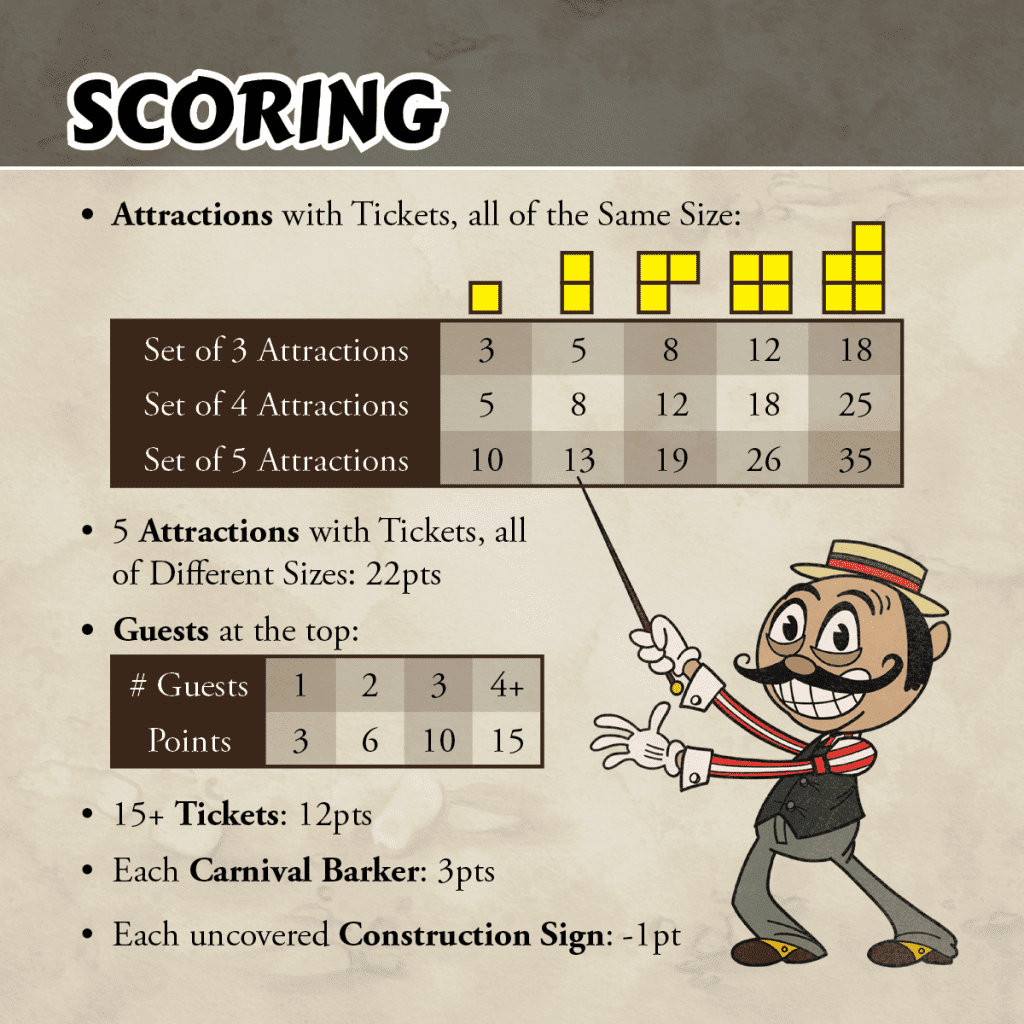
Game variability
There’s one part of the game that I haven’t mentioned yet. During the game set-up, three Trick of the Trade Cards will be revealed. Each of these 14 cards included in the game have their own objective which will then unlock a power for all the players that achieve it. They can be claimed at any time regardless of if/when they were achieved by the other players. Tricks of the Trade Cards will either give players an ability whenever they do a specific action or during end game scoring
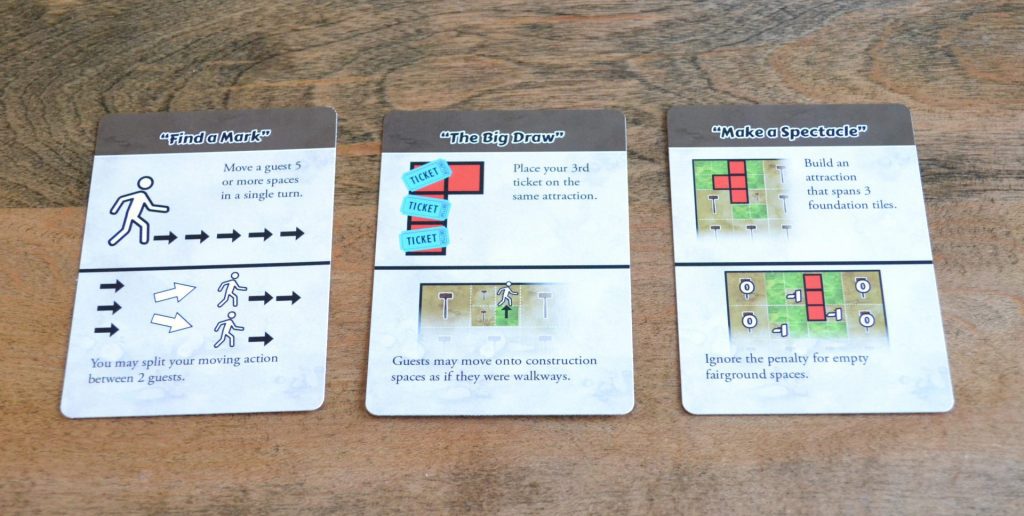
Final Thoughts
When I first heard about this game, I really hoped that it would invoke the same feeling as playing RollerCoaster Tycoon. Regardless of whether that was the designer’s intention or not, there are definitely some fun similarities. You want to design your park so that all your attractions can be visited and so that your larger attractions are accessible to more guests. Your walkways should lead your guests through your park in an efficient manner and you should try to use all the space you can. All these things in common mean that The Grand Carnival has quite a few parallels with RollerCoaster Tycoon… with the added bonus that you don’t have to worry about cleaning up guests’ vomit.
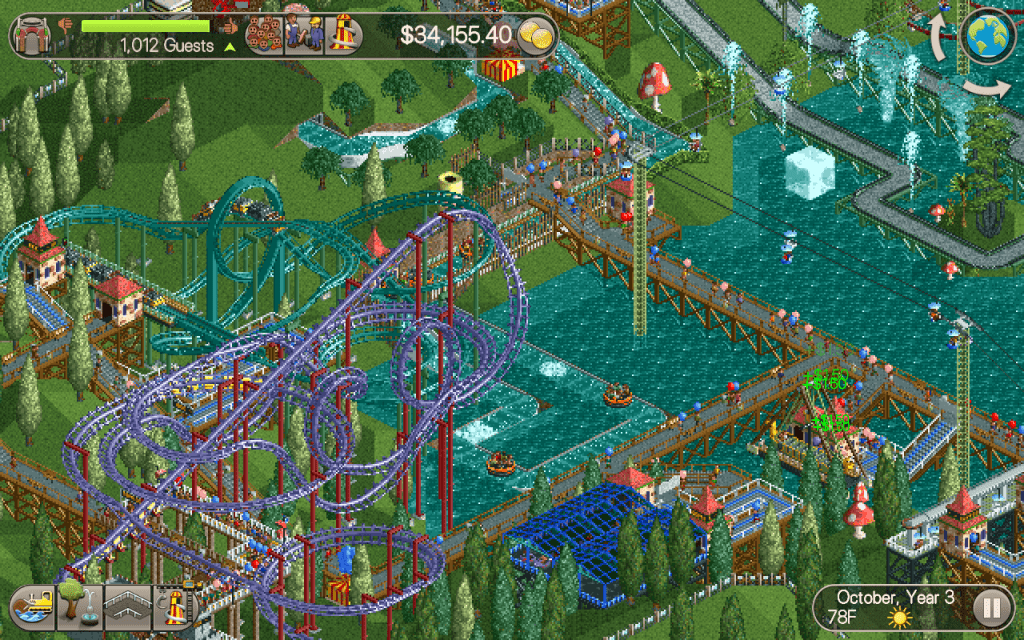
As far as board games go, The Grand Carnival reminds me of a combination of Patchwork and Karuba. For anyone who’s played Patchwork, the polyominoes connection is probably obvious. You are trying to find the best shapes to fill your park, and you need to keep track of what shapes are left otherwise you’ll end up with a hole that costs you points at the end. Pretty similar, right? The Karuba part comes from your walking paths: you are trying to have your guests walk efficiently through your park, while stopping at the attractions. This reminded me of explorers trying to get to their destinations, picking up treasure on the way. Since multiple guests can’t occupy the same space, a similar puzzle emerges in The Grand Carnival. I really enjoy this combination of two of my most played light strategy games.
Something else I really like about this game is the action selection mechanism. Since each player can only select their best spot (5) once a round, everyone is on equal footing. This also lets you plan based on what you know the other players can do. For instance, if one of my opponents has the perfect spot for the giant attraction I want, but has already used her 5 spot, I know I can wait a few turns before I grab it. It’s allows for players to be strategic with their moves.
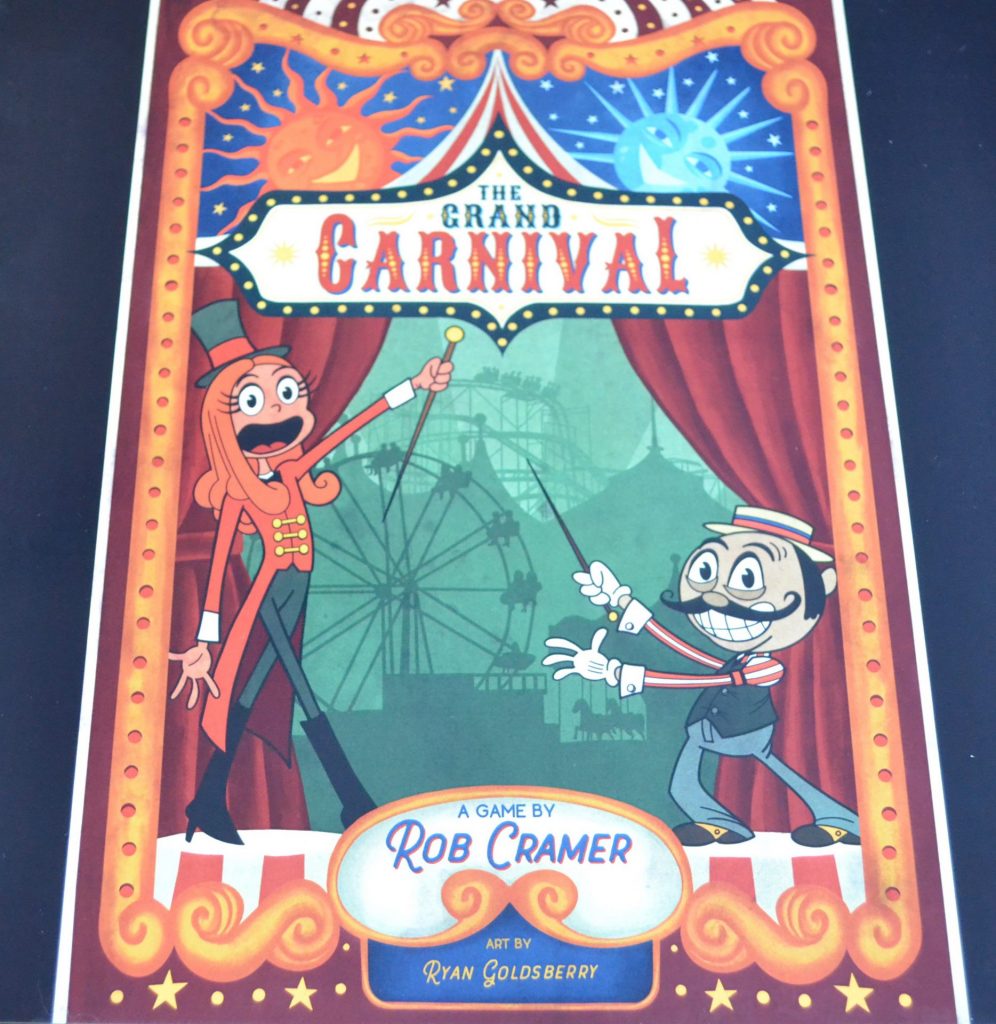
In reviews I like to talk about the quality of the components, but since this was a prototype copy pre-Kickstarter, the components will be a little different in the final version. What I can say is that I like the size of this game. Sometimes, games are a lot larger than they need to be, and I didn’t find that with The Grand Carnival. Player boards and foundation pieces are exactly the right size to be able to comfortably place attractions and move guests around.
The Grand Carnival is a fun light-strategy game that can be played with 2-4 players in under an hour (around 45 minutes). Its enticing theme and easily digestible rules make it a great choice for casual gamers looking to expand their collection or move experienced games who like to through a light game into the mix every now and then. Speaking as the former, I’m happy to say that The Grand Carnival has found a home on my shelf.
Six Month Update
I never ended up playing this game again. Part of that is because it was an unfinished prototype without a box, so it never actually ended up “on my shelf”. If it’s not there for me to see I’m not going to think about playing it.


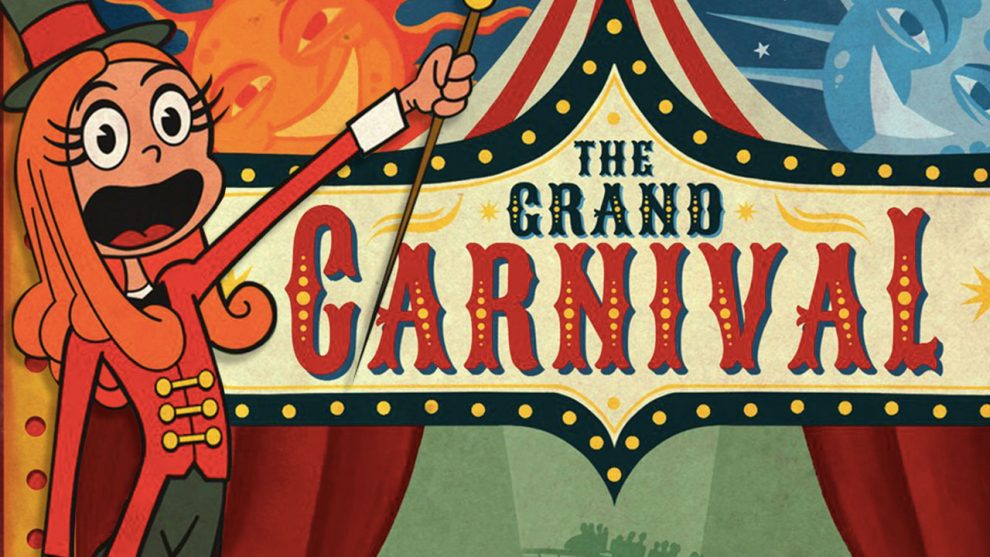
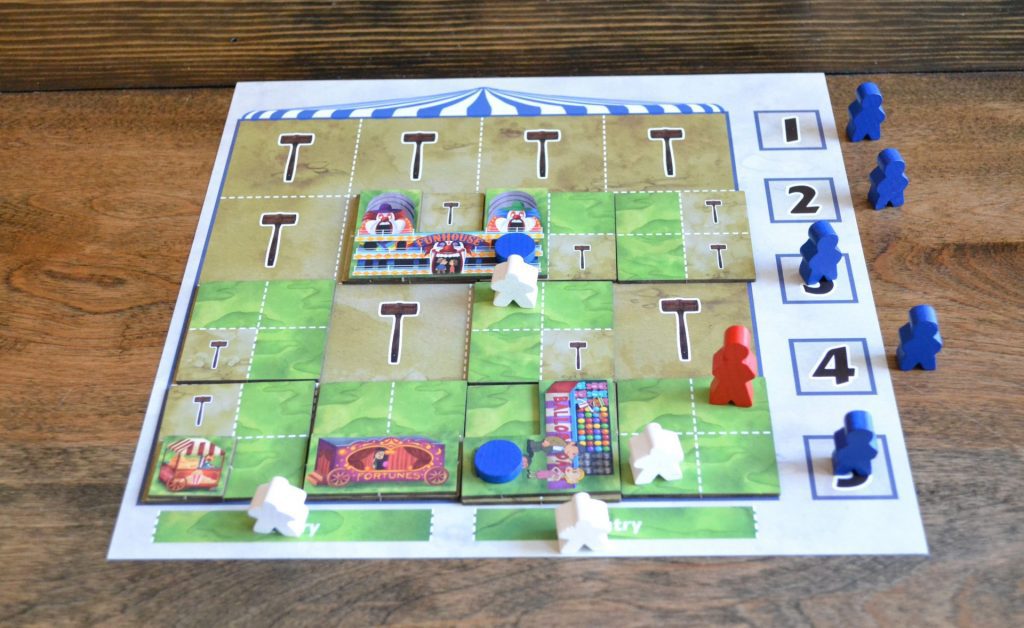
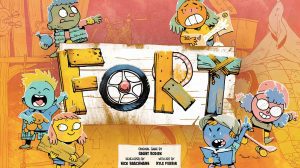

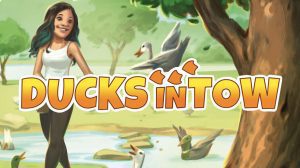
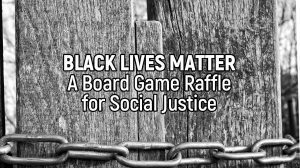




Have you by chance played Barenpark? I am curious as to whether this one scratches the same itch or if it stands on its own as an experience.
I actually haven’t, but I reached out to a friend who has played both and here is her answer: “From what I remember, I would say The Grand Carnival stands on its own and is maybe a step more complex than Barenpark, even with the advanced rules”. She’s only played Barenpark once so she’s not an expert, but from our conversation it does seem like The Grand Carnival has some main differences such as having to build the foundations for your attractions and also the action selection mechanism. Hope that helps.